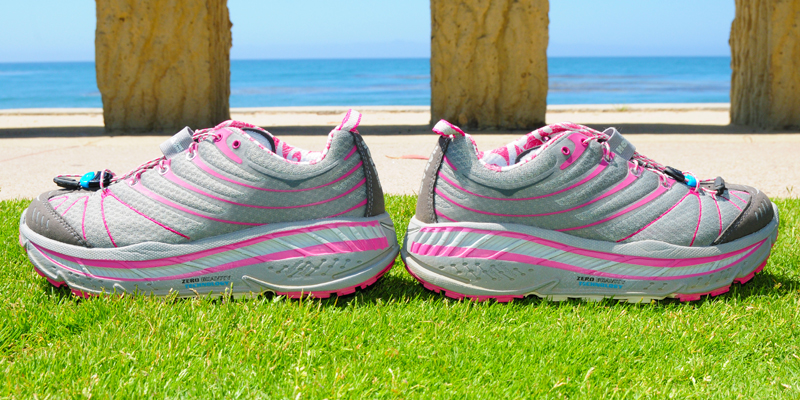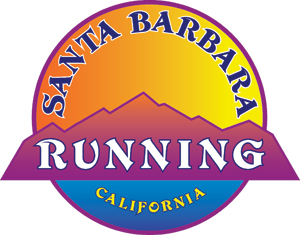
The Hoka One One running shoe is designed for distance runners (Presidio Sports Photo)
It?s ?Time To Fly? reads the Hoka One One running shoe slogan. This new long distance running shoe does pretty well holding up to the slogan considering the voluminous size of its wide-based midsole that is intended to provide extra cushioning for long distance runners.
This shoe is unique at first glance because of its midsole volume that is 2.5 times the size of most other running shoes, yet 30 percent softer. Going against the latest trends of less cushioning for lighter, smaller shoes, the Hoka One One stands out in its size and ability to reduce impact because of its oversized cushioning. It is surprisingly light and efficient considering its shape, and it may be the key for runners looking for more impact reduction than what most shoes provide.

The Hoka brand can be found at Santa Barbara Running Company stores located in Santa Barbara and Goleta.
Initially in testing out the Stinson Evo Trail version of the Hoka One One, I was skeptical about how the shoe would affect fluidity of movement and my running form. I was pleasantly surprised after a three-mile run over varying terrain, that the shoe had much more to offer than its clunky look. I was running on pillows, or at least the closest running shoes could get to pillows without losing their stability.
It took the first part of my run to adjust to the feel of the shoe. The wide base was key to its design and allowed my feet to sit deeper in the shoe?s midsole providing side cushioning along my feet as support. This helped keep my feet centered in the shoe, however I did find the need for a greater body awareness of my feet around intricate turns on the trail due to the wider base. I also developed a greater awareness for the speed at which I was running with these shoes.
They did not slow me down, however the Hoka One One?s were not ideal for quick turnovers. I felt extremely comfortable at a 9-mile-an-hour pace and felt like I could continue at the pace forever (even an 8-mile-an-hour pace felt good). But, with increasing speed the absorbing effects of the deep cushioning became more noticeable making the shoe less ideal. I never felt slowed down, but at fast speeds I felt I had to work a little harder.
Frances Chase-Dunn
ABOUT THE AUTHOR: Frances
Chase-Dunn is a former NCAA track &
field athlete at UC Santa Barbara and
has coached hurdles at San Marcos
High School. Having dealt with
injuries throughout her career,
Chase-Dunn stayed busy testing out
different types of running equipment
with the goal of preventing injury and
improving performance. Chase-Dunn
loves offering advice on the
latest running products available.
This held true for flat terrain and uphill running. However on my downhill runs, the extra cushioning actually made it possible for me to run faster than I would in any other shoe. I didn?t feel the impact on my feet and shins that I would worry about and slow down for in other running shoes.
That?s what makes this shoe great, impact reduction. It?s not about speed, it?s about long slow miles and reducing the stress those miles have on the rest of the body. According to the Hoka One One website, ?lessen the movement of the knee by as much as 20 percent, thus increasing efficiency and decreasing the possibility for injury.? Much of the impact as my feet hit the ground was absorbed by this shoe and kept from distributing to the rest of my body.
Essentially, this new style of shoe may be the answer to taking the stress off the body that other shoes are incapable of doing without the oversized cushioning. This speaks primarily to ultra marathoners and distance runners dealing with injury. However, any runner coming off an injury, or heavier in weight, I think will benefit from the Hoka One One?s design.
Even for competitors running at speed, this shoe could work for training purposes to lessen the shock that the body?s bones and joints take from high-mileage fitness programs. These shoes may not make the best fashion statement with their voluminous size, but they will allow you to run more miles.
